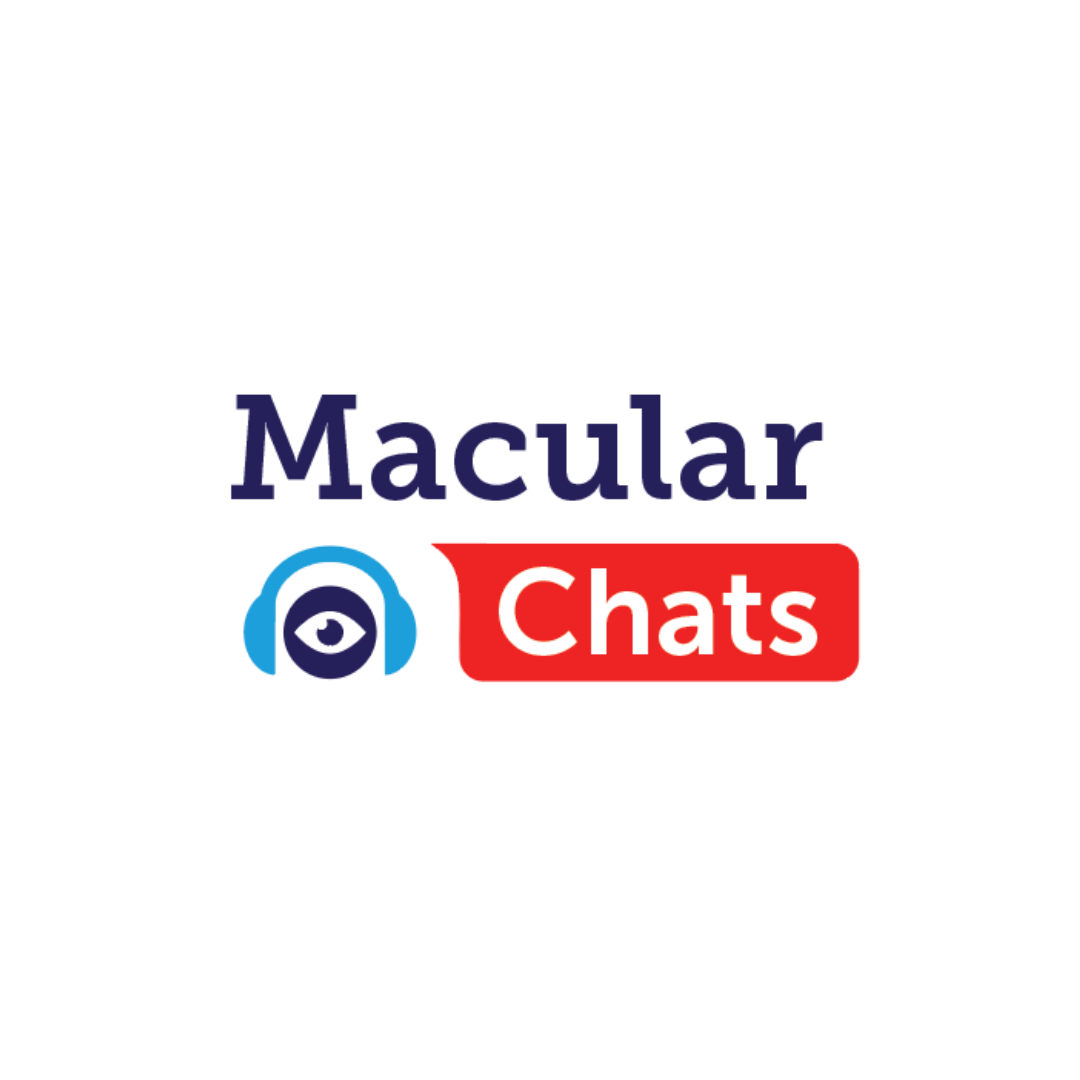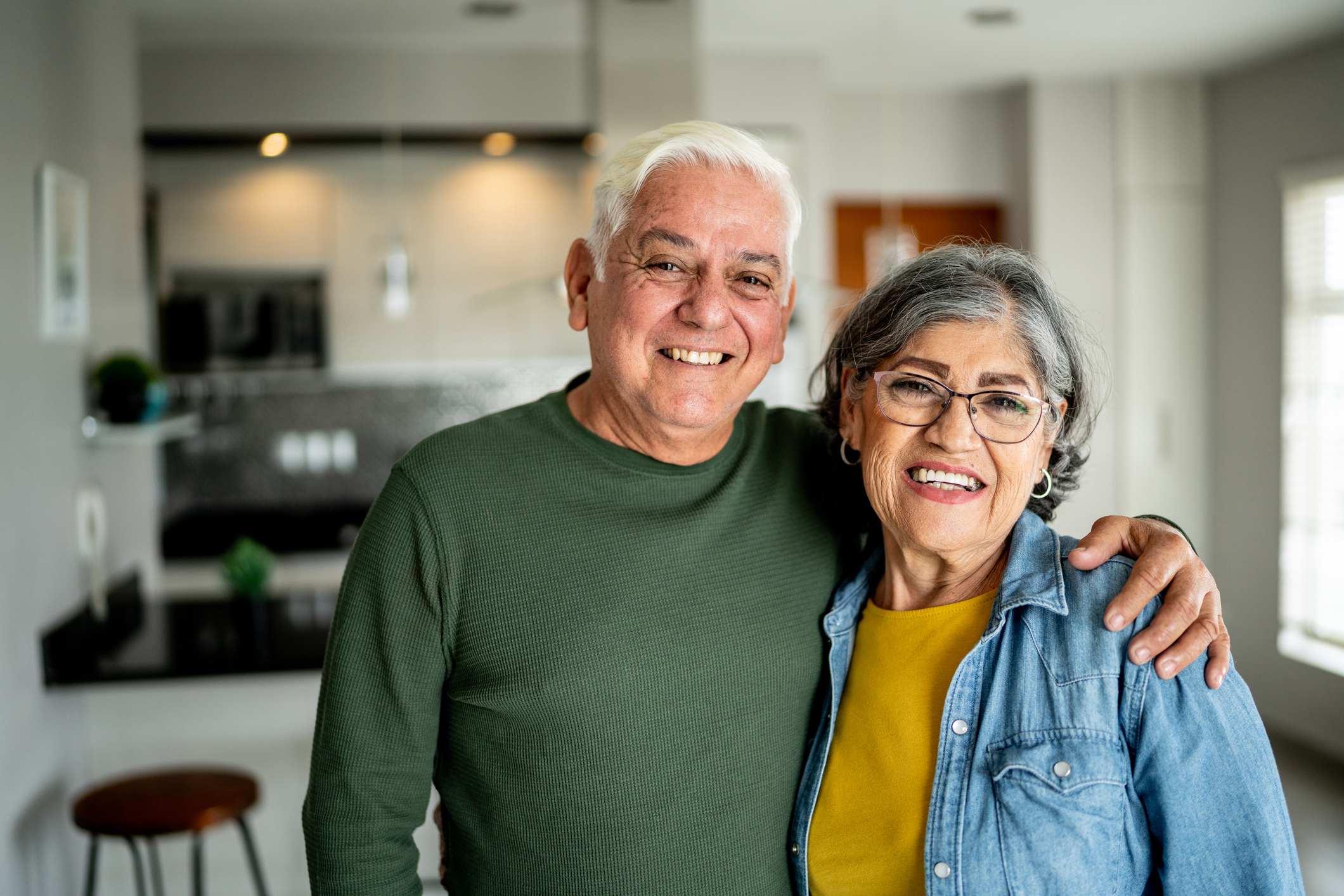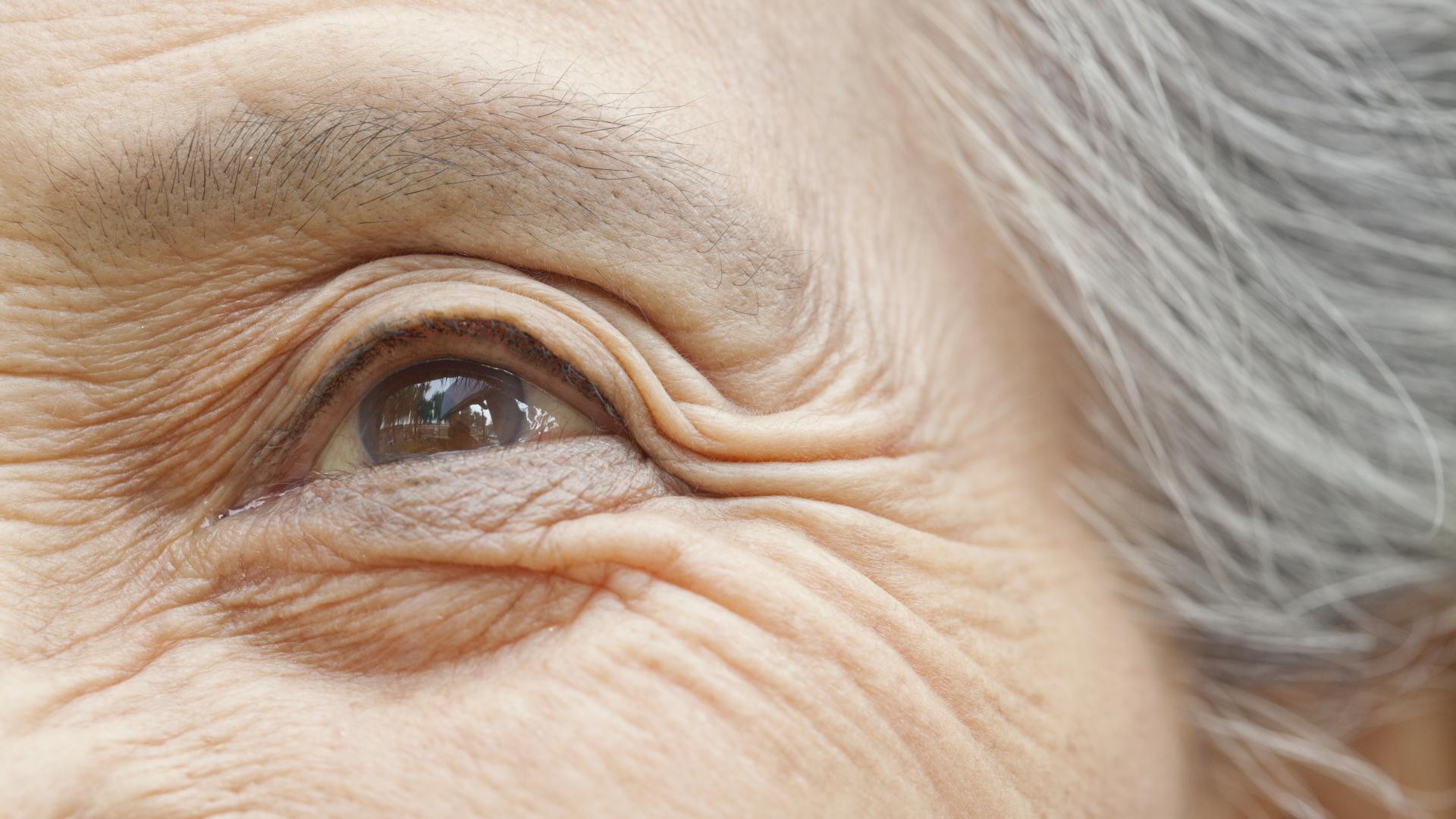Caregiving & Low Vision
Featuring
Joanne Dillon and C. Grace Whiting
President & CEO of the National Alliance for Caregiving.


Joanne Dillon and C. Grace Whiting
President & CEO of the National Alliance for Caregiving.

The guest speakers are Joanne Dillon, a caregiver, and C. Grace Whiting, the President & CEO of the National Alliance for Caregiving.
The information provided in this transcription is a public service of BrightFocus Foundation and is not intended to constitute medical advice. Please consult your physician for personalized medical, dietary, and/or exercise advice. Any medications or supplements should be taken only under medical supervision.
BrightFocus Foundation does not endorse any medical products or therapies.
Please note: This Chat has been edited for clarity and brevity.
MICHAEL BUCKLEY: Hello, I’m Michael Buckley with the BrightFocus Foundation. Welcome to or welcome back to the BrightFocus Chat. Today our topic is “Caregiving and Low Vision.” We have two guests today, and they’re going to give valuable perspectives and answer your questions about caregiving. Our guests today are Joanne Dillon, who’s a caregiver for a family member with AMD, and Grace Whiting, who is the President and CEO of the National Alliance for Caregiving—that’s a group that BrightFocus has worked with a lot in the past. We really appreciate the work that they do to help caregivers and make sure that, at a policy level, the work that caregivers do doesn’t go unnoticed and make sure it’s supported. Let’s start off with you. How long have you been a caregiver?
JOANNE DILLON: I’ve been caring for my dad who has [had] the disease for about 6 years. He was diagnosed in his late 80s, early 90s; he’s now 96 years old.
MICHAEL BUCKLEY: Wow, and what was the adjustment like when you became
a caregiver?
JOANNE DILLON: Well, the adjustment for me, personally, was leaving my home and my husband to drive. I live on Cape Cod, and my father lives in Dedham, Massachusetts, so it’s about a 150-mile roundtrip to bring him to his doctors’ appointments—not only his eyes but other medical appointments as well—and doing miscellaneous errands. So, when I have to come up for a doctor’s appointment, it’s a day’s process; usually, I’m here most of the day. And so, that’s a little bit of an adjustment on my time schedule, my time with my husband, and that kind of thing.
MICHAEL BUCKLEY: In your experience, what’s been the hardest part of being
a caregiver?
JOANNE DILLON: I think that when you watch someone lose their independence a little bit and have to give up some of the things that they truly loved, like now my father’s disease has advanced to the stage where television is hard, and he used to be an avid reader, so now he depends on the audio books. His handwriting is very limited now, but also, he’s 96 years old, so we constantly remind him that he’s doing really well for someone of that age. I think that it’s kind of multiple with his eyes and then normal 96-year-old, you know, things that go on with someone. But he’s pretty independent, and we’re truly blessed in that regard.
MICHAEL BUCKLEY: That’s great. And kind of related to that, what’s been the most rewarding part of this experience being a caregiver?
JOANNE DILLON: For me, spending more one-on-one time with my dad, getting to know his reading interests more, so that we can get the right audio books for him. He seems to be a little bit more reminiscent now, as he’s aged, about things that have gone on his childhood and stories and his time in the service. Now, I have a lot of sisters, so we never asked about his service career when we were kids, not being history buffs. But he’s opening up a little bit about the places he visited and things that happened in World War II and those kinds of things. So, just that time and the stories are very valuable to me. [chuckles]
MICHAEL BUCKLEY: No, that’s wonderful. That’s some great history to pass down. So, Grace, I want to turn to you for a moment. And first of all, do you want to tell us a little bit about your organization, the National Alliance for Caregiving?
GRACE WHITING: I’m happy to. The National Alliance for Caregiving has been around 23 years, and our main focus is public policy, research, and advocacy. We work with a network of state and local caregiving coalitions across the U.S. We do work on Capitol Hill with members of Congress, and we also convene the International Alliance of Caregiver Organizations, which is a global coalition represented by 16 different nations, all of which are headed by a nonprofit who’s working on caregiving issues in that country. So, we’re thinking big about what we can do for caregiving and for families who are going through what Joanne’s going through.
MICHAEL BUCKLEY: No, that’s great…and that’s a national and global perspective. When you hear Joanne talk about some of the challenges but also some of the rewards, I mean, is that something that you hear other caregivers around the country and around the world talk about?
GRACE WHITING: Absolutely. I think caregiving is a complicated relationship. You know, one of the things that’s driving it, whether we think of that person as a loved one or we have a more complex relationship with them, is that the activities of caring for someone, doing the high-touch activities like helping someone get dressed or bathed, instrumental activities like coordinating services and managing finances, and even sometimes medical and nursing tasks. Those are really an outward expression of love and affection for another person and we see globally a recognition that the contribution that people are making to care for their friends and family members needs to be respected and that there are certain rights that caregivers have as their own person. The caregiver is a separate person who has their own needs for health, wellness, well-being, career, relationships, and so forth. And so, that’s one of things we work on: How do we empower people to be able to care, to be well-prepared to care, but also so that they can have their own life and take care of themselves?
MICHAEL BUCKLEY: That’s a great point. When you think about how policymakers or the media portray…perceive or portray caregivers, are there, sort of, common misperceptions about caregiving that you think we can help change?
GRACE WHITING: Absolutely. One of the most common is that caregiving is really just something that impacts women who are older and make a career change for another relative, and that certainly is sort of the typical case, but I would say that we see more and more different types of families, different types of people taking on caregiving. The national data that come from the study we do with AARP, roughly every 5 years, found that there’s approximately 60 percent of America’s caregivers who are women and 40 percent who are men. And it strikes me that, among younger generations, men and women are equally as likely to pick up care, which is wonderful and much-needed, because many of the folks who are really in the throes of caregiving now often will say to us, you know, “I wish my brother would help out with this, or I wish other people in my family…” and we see those attitudes starting to change with younger generations.
The other thing I would say is that we’re beginning to recognize that people contribute different types of activities. This is going to sound silly, but I’m a huge nerd. I was watching an X-Men movie, and Wolverine—the X-Man—comes in and he’s taking care of his mentor, Professor X, and if you’re not a nerd like me, essentially these are superheroes, and Professor X has a neurological condition, but because he’s a superhero, every time he has a seizure, there’s an earthquake. And so, here’s this Wolverine picking up Professor X out of the wheelchair and transferring him to the bed, and I look at my husband and I say, “I can’t believe this, but this is a caregiving movie; that’s amazing.” And I also thought to myself, you know, we’re not going to ask Wolverine to raise his hand and say, “I’m a caregiver,” and I think many people who are selfless enough to take care of someone else may not self-identify. So, we have to make sure that those systems are willing to invite that person in, whether it’s a doctor asking you—“Do you need help managing this activity or do you need help to take care of yourself or do you need respite?”—or even your local home- and community-based service providers like a senior center or other community-based organizations.
MICHAEL BUCKLEY: Yeah. No, that’s a great point. So, Joanne, I was wondering when you look back over your time as a caregiver, are there things that…kind of lessons you’ve learned or observations that you’ve reached about what it means to be
a caregiver?
JOANNNE DILLON: Well, I think over the years that you become more compassionate and empathetic with your family member or your friend or who you’re dealing with. In my case, I’ve been truly blessed. We have a large family, and all of us help with certain tasks. Now, I might be the medical person, but another sister would be doing the billing and another one, the shopping, and I do have a brother, and he tries to do the day-to-day deeds or something in the yard or whatever my dad might want done. So, not one of us is the primary or sole caregiver for my dad; it’s kind of a family effort all the way around. But I would think that if you were the sole caregiver, there’d be many issues and things—logistics that would need to be worked out, and I do believe self-care is important, too, because if you can’t take care of yourself, then it’s hard to take care of a family member or a friend that needs support, as well.
MICHAEL BUCKLEY: Yeah. No, I agree. So, what would you say to a new caregiver? If you met somebody today who was just starting as a caregiver, what type of advice would you pass on to them?
JOANNE DILLON: Well, I think that as far as the patient is concerned, you want to encourage any amount of independence that they have and make sure safety measures are in place and make sure that—it doesn’t have to be you—but if someone can do their shopping or make appointments or whatever, I don’t think that…I think it would be very difficult for one person to have to do all of that, and I think any part that you can hand off or get support with is instrumental. In that way, you can take care of yourself a little bit, too.
MICHAEL BUCKLEY: Yeah, I agree. Grace, I want to get back to an interesting point you made a few minutes ago about sort of the changing in society of ages and genders or, more specifically, Wolverine’s, as you cited, taking on caregiver roles. Can you talk a little bit about gender differences, like the different combinations when it’s a woman taking care of a man or when it’s a man taking care of a woman? Are there gender differences and challenges that come into the relationship between the caregiver and the care recipient based off of gender?
GRACE WHITING: There are absolutely…and I don’t want to generalize here, just because, of course, there are people who are LGBT or have varying gender identities, and that’s sort of a different situation as well. But I would say, in general, we know that women tend to do more of those high-touch activities, so they’re usually hands- on, day-by-day, often living with the person who needs care, versus men who tend to do more of the coordination, running errands, and managing finances And I think, Joanne, you put it perfectly that this is something that we’re all doing together, and people are taking different pieces of it, and I think for a lot of caregivers, looking and identifying what is it that we need to do and who can take that piece of it is
really important.
The other thing I would say is there was a really interesting study done out in Washington state by a researcher, Dr. Frances Lewis, and she talked about and looked at breast cancer dyads, particularly marriages where the man was taking care of the woman, and one of the things she found was that the men wanted to fix it and the women wanted someone to just listen to them and allow them to really grieve for what they were going through. And until they really sat down and recognized, “Hey, this is the disease that’s putting the strain on our family; it’s not you and me,” a lot of people thought, “Gosh, my spouse is being a real jerk right now, and I don’t want to talk with him.” And so, she created an intervention that allows the caregiver to be a better active listener, to stop trying to fix whatever it is, and to just acknowledge and accept who people are and to provide for some self-care, you know? Caregiver, take care of yourself, and that empowers you to be a better caregiver. And the fascinating thing in the study was that the health of both the person with breast cancer and their husband got better. So, both people not only had better emotional health and a stronger relationship, but they both physically were in better health after they found a way to tackle that.
MICHAEL BUCKLEY: Wow. No, thanks so much for mentioning it. It’s really interesting. And Joanne, just kind of to Grace’s point about some of the relationship challenges and communication: Joanne, in your experience, what’s the best way for caregivers to communicate with the family member or friend that they’re helping out? How can…what’s obviously a challenging situation go best?
JOANNE DILLON: Well, I think you have to talk openly about concerns and what care might be coming next in terms of medical care or safety measures around the house—What’s coming up the line? What do we need to do? —but also listen very carefully to the patient’s concerns. This is a scary thing they’re going through, and you kind of just need to—like Grace was saying—just listen. Just, you know…you can’t fix it, but you can be there listening and supporting as best you can. So, that would be my…
MICHAEL BUCKLEY: Yeah, I appreciate that.
JOANNE DILLON: There are little…I was just going to say there are few safety measures that you make as the person progresses—to the little dots on the microwave or painting a stair yellow, so they see the edge of a stair through the peripheral vision, or things like that; just try to be on top of anything that you can do to make things a little more safe for the individual.
MICHAEL BUCKLEY: Yeah. And Joanne, I know you and I both come from New England where there’s this stereotype of people that are a little stoic and stubborn and proud. So, how do you help somebody who maybe doesn’t think they need
any help?
JOANNE DILLON: Well, I would believe them, number one. [laughs]
MICHAEL BUCKLEY: [laughs]
JOANNE DILLON: As I said before, I would definitely encourage their independence, but make sure those safety measures are in place. As in the case of my dad, he’s 96, but he has a pool out in his backyard—a built-in pool—and he loves. Over the years, he’s liked to go out and plant flowers and whatever, and he still wants to go shopping for the flowers, even though he may not be able to see them as well. He knows exactly which flower he wants and where he wants it planted, and so we encourage that. We’ve made safety measures around the pool area, so that he will walk not near the opening of the pool and things like that. So, encourage their interests as much as you can. Let them continue whatever they can, but then we’re always there to kind of help. “What do you need, Dad”; “Where do you want this planted, Dad”; “What kind of flower”?—Those kinds of things—and the same with his audio books and so forth. “Which kind of books do you want to read?”—and those kinds of things.
MICHAEL BUCKLEY: Well, that’s great and good advice to sort of make it a shared experience. Grace, I want to turn to kind of the policy level. I know your National Alliance for Caregiving is a U.S.-based organization. So, kind of through that prism, what can American employers or governments here in America— whether that’s local, state, federal—what can the public and private sector do to better support caregiving?
GRACE WHITING: Actually, there’s a lot that can be done. One of the things that I would say relative to employers is we know from the research that there’s roughly 6 out of 10 caregivers who are working either part time or full time, and the vast majority of those caregivers need some kind of accommodation at work in order to continue to do their job. We hear some people that have shared feedback with us from our grassroots networks that they feel like work allows them a chance to get respite from the caregiving situation and to continue to maintain that identity that comes with your career. Now, not everybody feels that way, and certainly there’s no right or wrong answer, but one thing that employers can do is to provide some support for caregivers in the workplace. Some of the programs that are most innovative would be, for example, an EAP—or an Employee Assistance Program—where people can go out and get benefits and assistance with things like geriatric care management, help finding an assisted living facility or other types of community support, and help with managing stress.
We’ve also seen companies do affinity groups or social groups. You might have a women’s interest group, you might have an LGBT group, you might have a Latino group, and so they’ll add a caregiving group so that you can connect with other employees. And in many cases, we’re seeing the advent of the flex-time, telework, and those kinds of job sharing where you shift around the schedule, so that you can be more accommodating to caregivers in your midst. The other policy angle, I think, is the movement/momentum we’re seeing around paid family medical leave, which would allow people to elect for essentially like an unemployment benefit, and that benefit would then come back to you and replace your salary anywhere between 55 percent and higher and do so anytime you qualify for FMLA leave. So, it already exists in some states—California, New Jersey were early adopters—but I think that’s something that people are starting to say is, “We really need to be able to help caregivers at work.”
The other thing I would say is just stressing that caregiving impacts us at all ages, and when we look at elder care, in particular, we sometimes forget that people have conditions that are related to vision or teeth or hearing; there’s actually a bill in Congress that was called “Seniors Have Eyes, Ears, and Teeth,” and they talk about how difficult it is to get coverage under the Medicare program for anything related to vision, hearing, and oral health; and I think that’s something that a lot of people aren’t even aware of, that Medicare may not cover some of the necessary services that older adults need, and there needs to be more conversation about that—not just with physicians but also with lawmakers.
MICHAEL BUCKLEY: Yeah. No, those are all great points. We actually received two questions very similar to the topic you just answered, Grace, about compensation and paid leave. So, we have two callers that are wondering how can somebody find out in their community or state what type of…if there are benefits like that?
GRACE WHITING: There’s a national advocacy organization that’s working on it called the National Partnership for Women and Families, and that’s the group that originally helped to draft the Family and Medical Leave Act. So, if you go to their website, which is NationalPartnership.org, and you look under their “Our Work” section, they have updates on their work section. And there are also updates from a group that’s called the National Conference of State Legislators, and that would be NCSL.org. Both of those websites, I think, can provide great updates. We also have some updates that go out through our weekly newsletter, so you’re welcome to go to Caregiving.org and sign up for those weekly policy updates. It’s not very many states right now; it’s primarily California, New Jersey, Rhode Island, New York, D.C., and the state of Washington. So, it’s an effort that’s gaining ground, but it’s not widespread. Sometimes employers will actually create their own paid leave program, but that’s typically set up differently than the kind that goes through the state.
MICHAEL BUCKLEY: Well, thanks. I just want to turn to Joanne for a moment and talk about why…I understand you drive a great distance to help your father at a number of doctors’ appointments. So, as a veteran of many doctor appointments, any tips for our audience that can make a doctor’s appointment go as well as it can be?
JOANNE DILLON: Well, you know, it all depends on your doctor’s office, I think. Sometimes a little creative scheduling needs to take place depending on…my dad’s elderly, so maybe the first appointment after lunch fits in his schedule better or the first one in the morning. You know, maybe cutting down on how many rooms that a person has to be in to accommodate an appointment—a little bit of best practices in that. When my dad goes for an eye appointment, he might be in three different rooms; if it could be cut down to two, that would be fantastic. And I know that the equipment needs to be in one room and so forth, but maybe the person taking the intake and making sure all his medications and so forth are the same, he can be in the same room to get his injection instead of bouncing around so many times.
For people that are working, I think, if a facility could make evening appointments or very early morning appointments so that they don’t have to take so much time off from work or…those kinds of things. I know in the case…I have a sister suffering from this disease as well. She has to leave work, and her husband leaves work to make her appointments. So, something like that would make it easier for them as well. So, you know, I think just talking with your physician’s office. State what’s best for your particular person that you’re there with; maybe things can be figured out a little bit to kind of make it easier for them.
MICHAEL BUCKLEY: Yeah. No, that’s great advice to sort of speak up to ask for help or what would work best for your family.
JOANNE DILLON: I’m happy to advocate.
MICHAEL BUCKLEY: Yeah, a lot more than many of us are often comfortable doing, but I think you’re exactly right. You mentioned several times, Joanne, about how important it is to take care of yourself. How do you do it? How do you stay as mentally and physically strong as possible? Because it seems like you do quite for your family. I was wondering: how do you take care of yourself?
JOANNE DILLON: That’s kind of a work in progress. [laughs] You know, I do count on my siblings for support if I need it, or if I’m going away for a weekend with my husband, we make sure that all of Dad’s care is taken care of. Personally, I like to read or meditate or take a walk, and now that the weather’s getting great and I live on Cape Cod, I will be spending some time at the beach just kind of meditating there when I can. So, those are the kinds of things that I do that kind of take care of me.
MICHAEL BUCKLEY: Yeah, it’s very important. I just want to turn to Grace for a moment. You talked about some of the challenges that caregivers face and some of the changing nature of society. How do you…coming from a crystal ball standpoint, Grace, where do you see caregiving going over the next couple of years or a decade or two? Are there trends that you see when you think about the future of caregiving
in America?
GRACE WHITING: Yeah, absolutely. I would say the first trend is: How do we carve out pathways for caregivers? So, one of the conversations we’ve started is with the U.S. Food and Drug Administration to say, when you’re doing a clinical trial and you’re looking at, “Does this medicine work, or does this medical device work?”—that you’re also thinking about how does it work when that person has a caregiver who’s trying to either use the device, who’s trying to manage the medication, and what guardrails should be in place so that the caregiver is well prepared, so that the person who is the patient…their voice is still being heard. I think we’re going to see more and more of these pathways being charted out in different sectors, and colleagues of mine are working on other types of pathways.
For example, AARP has a state law called the CARE Act, and it requires that a hospital note who the caregiver is in the medical record at time of hospital discharge and provide some type of training to the caregiver, so that the hand-off between the hospital to the home is more smooth. That is another way to get at pathways that are actually existing in the real world.
My colleague out in California, the Family Caregiver Alliance, has started a program called the Atlas of Caregiving, and they look at how technology can help improve coordination of care and the activities of care and make it easier for families to navigate these. So, I think more and more, we’re going to see this recognition that caregivers really are the best zone of our health and social care systems.
In fact, just a couple of years ago, Congress passed a new bill that would require an advisory committee on caregiving at the U.S. Department of Health and Human Services and that they would come up with a plan on how we’re going to tackle some of these issues as we look into the future—that was under the RAISE Family Caregivers Act. At least from what I’ve heard, my understanding is the advisory committee will actually begin to meet this summer.
MICHAEL BUCKLEY: Well, that’s great. And what you say about the hospital…that just seems such common sense. It’s kind of shocking that you have to…that we as a society have to advocate to create that. So, one more question about the future, Grace. Any new technologies? It seems like nowadays there’s an app for everything. Are there emerging technologies that can help caregivers and their extended families?
GRACE WHITING: Yes and no. I would say that there is technology for everything, but the tricky thing about technology—and this will be familiar to those of you who might be working on project management or other types of apps—is that the mobile application has to be easier to use than whatever you’re currently using now. So, if I use Skype to call my grandmother and check in—and I know how to use Skype, and she knows how to use Skype—the barrier to entry for a new piece of technology and learning how to use it is pretty high, and I do see a lot of innovators saying, “Well, let’s create something specific to caregiving.” I would argue and think there’s research out there that’s sort of working through this lens of “We need to work with what people already know and need them where they are, because caregiving is a regular part of the human experience.” So, I think the most promising technological adaptations would be companies like Lyft and Uber who are thinking about, “How do we make our service disability-friendly and friendly to older adults who may need help getting in and out of vehicles”?—as well as other organizations that are thinking about, “How do we adapt existing technologies that people use and make them more accessible?” So, rather than, for example, a necklace that’s your personal emergency response system, you might have it connected to your phone. So, you’re replacing something that you already use with something that works a little bit better, and I think the more that tech can do that, the better it will be. The other thing is just long-distance caregiving. People want to find ways to stay connected, so I think we’ll continue to see more telehealth, as well as just more opportunities for people to communicate virtually.
MICHAEL BUCKLEY: Yeah. No, that’s great. Joanne, when you hear about some of the technologies that Grace outlined, are there things that help you and your family stay organized and coordinated as much as you can?
JOANNE DILLON: Well, I think I’m a little old school as far as…you know, I use calendars. I do written things. I don’t type so much into my phone and those kinds of things to keep appointments and whatnot. My father has had a lot of assisted technologies over time. It’s just that his disease has progressed that he can’t…no longer utilize these things. He’s had different magnifying things and computer things and so forth, but he’s kind of lost interest in those. He doesn’t…you know, he’s not able to see the images the way he used to, so I think that…you know, in my case, we’re not really looking so much for technology. Family is close, so we’re not doing Skyping and those kinds of things, but I can see how helpful they would be to others, certainly. And maybe my sister—she’s 56—she’s dealing with this as time progresses, these are the kind of technologies and things that would probably be very helpful for her.
MICHAEL BUCKLEY: Joanne, we just got a question from Anna from California who was wondering…like a big picture…for a family who is new to low-vision disease and they worry about whether their loved one can live alone with some outside help. I mean, how would you answer them? Do you think it’s possible for people with low vision to live alone?
JOANNE DILLON: Yeah, I think that’s a kind of a personal call they’re depending on—all aspects of that person’s physical well-being. If it’s just a low vision, they’re able to do some independent things…now, I’m dealing with advanced age here, so it kind of creates a little more complication as someone ages. But certainly in the case of my sister who is young and dealing with this, she still has a lot of abilities. Her vision might be off a little bit, but she’s still able to drive and work and do many things. So, I think it’s the progression of the disease and where you are in it [that] would probably dictate the type of assistance one might need.
MICHAEL BUCKLEY: I appreciate that. So, to our listeners, we will conclude this conversation pretty soon, because as you can hear, Joanne and others…you know, we understand how busy caregivers are and we want to respect their time. So, a number of topics came up today where BrightFocus has materials on our website, BrightFocus.org. Grace mentioned clinical trials, and we have a free publication called “Clinical Trials: Your Questions Answered.” That’s available at our website. We talked with Joanne about how to make an eye doctor visit go as well as possible, and we have a nice kind of front-and- back card that you can take with you to an eye appointment, and it’s called “Top Five Questions to Ask Your Eye Doctor,” and it mentions important things to bring with you. Over the next week to 2 weeks we’ll be putting together a written transcript of the call and also an audio file, and we’ll be glad to share them with you.
Our next Chat will be July 24th, and it’s called “Living Your Best Life with AMD.” It’s going to continue a lot of the topics that Joanne and Grace mentioned today about how to have a safe and healthy and independent lifestyle while with low vision.
And again, that’s going to be on July 24th.
So, Joanne and Grace, I just want to thank the two you so much for your time and your really helpful suggestions and your candor about the challenges and also the opportunities for caregiving. So, Joanne and Grace, any last words for our audience before we conclude today?
GRACE WHITING: I would just say you’re not alone, and we appreciate the work that you’re doing. I mean, I think about many millions of Americans…it’s estimated there’s as many as 44 million Americans who are providing care at the value of $470 billion a year, and so the things that you do day to day that may seem small have a huge impact on our society, and I would just thank you for what you’re doing. We appreciate it.
MICHAEL BUCKLEY: Thank you. And Joanne, any final words?
JOANNE DILLON: I would just reiterate everything that Grace just said, and absolutely try to take yourself…take care of yourself throughout the process.
MICHAEL BUCKLEY: That’s certainly great advice.
BrightFocus Foundation is a premier global nonprofit funder of research to defeat Alzheimer’s, macular degeneration, and glaucoma. Since its inception more than 50 years ago, BrightFocus and its flagship research programs—Alzheimer’s Disease Research, Macular Degeneration Research, and National Glaucoma Research—has awarded more than $300 million in research grants to scientists around the world, catalyzing thousands of scientific breakthroughs, life-enhancing treatments, and diagnostic tools. We also share the latest research findings, expert information, and resources to empower the millions impacted by these devastating diseases. Learn more at brightfocus.org.
Disclaimer: The information provided here is a public service of BrightFocus Foundation and is not intended to constitute medical advice. Please consult your physician for personalized medical, dietary, and/or exercise advice. Any medications or supplements should only be taken under medical supervision. BrightFocus Foundation does not endorse any medical products or therapies.

In recognition of National Caregivers Month, this episode explores the vital role of those who support individuals living with vision loss—whether family members, professionals, or volunteers.

Dr. Jeffrey Stern and Dr. Sally Temple, Principal Investigators and Co-Founders of the Neural Stem Cell Institute, will explain what stem cells are and share the latest updates from clinical trials.

Join Dr. Sara Fard, a retina specialist at Illinois Retina Associates, as she explains the benefits of sustained GA treatment, including slowing the rate of vision loss, protecting retinal tissue, and supporting daily visual function.

Dr. Diane Bovenkamp highlights several of this year’s groundbreaking projects and explain how they’re driving progress in early detection, risk reduction, new treatments—and ultimately, a cure.
Help Fight Macular Degeneration and Save Sight
Your donation helps fund critical research to bring us closer to a cure for this sight-stealing disease and provide vital information to the public.
Donate Today